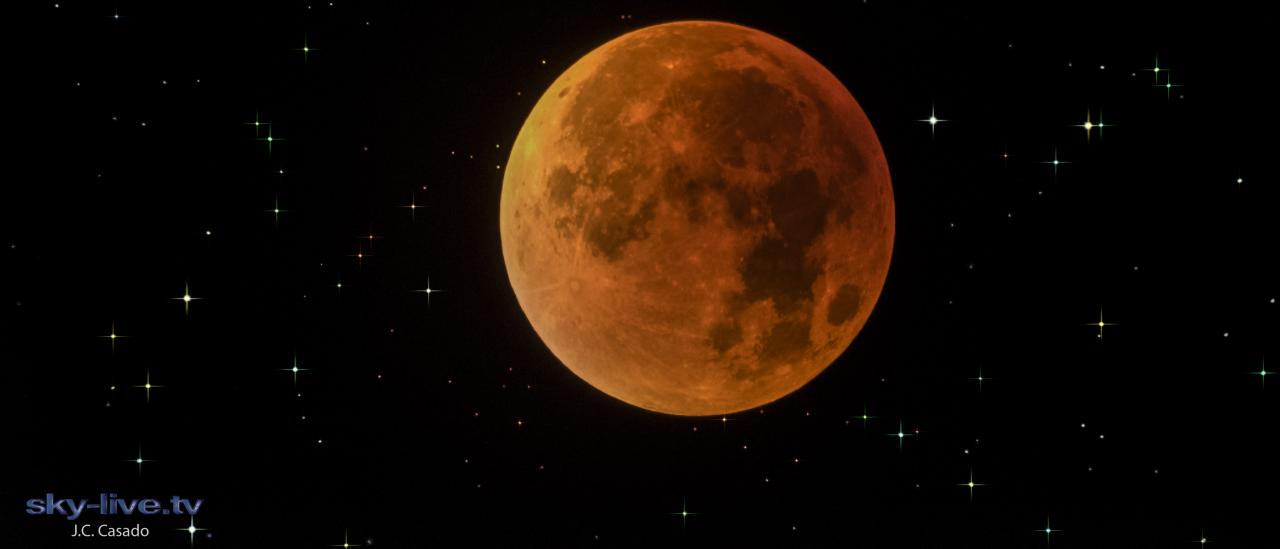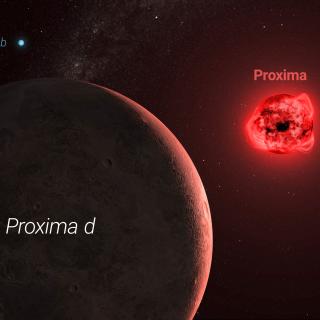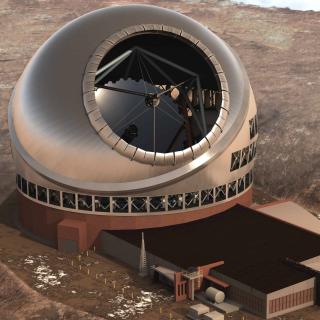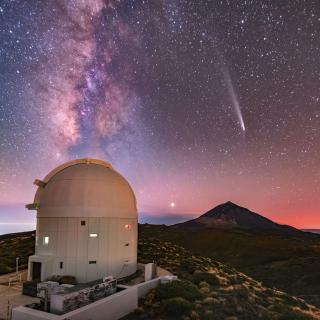It is not often that the Moon shows a total eclipse and the phenomenon of Supermoon, and that this is the second full Moon in a month, referred to in some us media as a Blue Moon, which does not refer to its colour. This has not occurred since 1982, but we should understand it as nothing more than a curious coincidence. It does not have any implication, either positive or negative, for the Earth, and from the astronomical point of view the main interest is in the observations and measurements which can be takne during the total eclipse.
Total eclipse of the Moon visible from Asia and Australia
Lunar eclipses occure when the Moon passes through the shadow of the Earth. This does not occur every month because the orbit of the Moon is inclined with respect to the plane of the Earth’s orbita round the Sun (the plane of the ecliptic). In contrast to solar eclipse, lunar eclipses are visible from any place on the Earth where the Moon is above the horizon at the time of the eclipse.
During eclipse totality, the Moon does not disappear from view, but appears reddish in colour, which gives rise to the references on the social networks as “Blood Moon”. The Earth’s atmosphere, which extends up to 80 km above the Earth’s surface, acts as a sort of lens, which bends the Sunlight and also filters out its blue component, letting the red light pass through and fall onto the surface of the Moon, from which it is reflected back, giving the Moon its characteristic copper tone.
According to data supplied by NASA, in the year 2018 there will be two total eclipses of the Moon, on January 31st and on July 27th. The first of these eclipses will be fully visible from Australia and from Eastern Asi, but it will not be visible from Europe. As for the second, we will be able to see the final phase from Europe and north Africa. We will need to wait until January 21st 2019 to be able to see a complete total eclipse of the Moon.
Supermoons
Becasue the orbit of the Moon is an ellipse, there are times when it is nearest to the Earth, its perigee, and others when it is at its farthest, apogee. Supermoons appear when the full Moon occurs with the Moon close to perigee, when its apparent diameter is 14%& bigger, and its light 30% brighter, thatn when the full Moon occurs at apogee. The question is whether we can notice this change in size just by looking, and the answer it that it is really quite difficult to do this, even though the Moon is brighter.
Making calculations we can work out that it is not infrequent for the Moon to be full when it is close to perigee. In fact there are 3 to 5 supermoons per year (of the 12 to 13 full moons). During 2017 we had three supermoons, and there will be the same number in 2018 (two in January and another in December).
In the most favourable situation a supermoon will have a diameter of 4 minutes of arc bigger than the full Moon at apogee. This means that the increase in the angular diameter of the supermoon is only one fifteenth of the angular size of our little finger held at arm’s length. This is really hard to distinguish just by looking at it.
(*)
Total Superlunar Eclipse of 2015: During the whole Moon does not disappear from sight, but acquires a reddish tonality. The Earth's atmosphere, which extends about 80 km beyond the earth's diameter, acts like a lens, deflecting sunlight while effectively filtering out its blue components, allowing only red light to pass through that will eventually be reflected by the Moon, giving it a characteristic coppery glow. HD Image https://flic.kr/p/z6yXFG Credit: Juan Carlos Casado - starryearth.com



